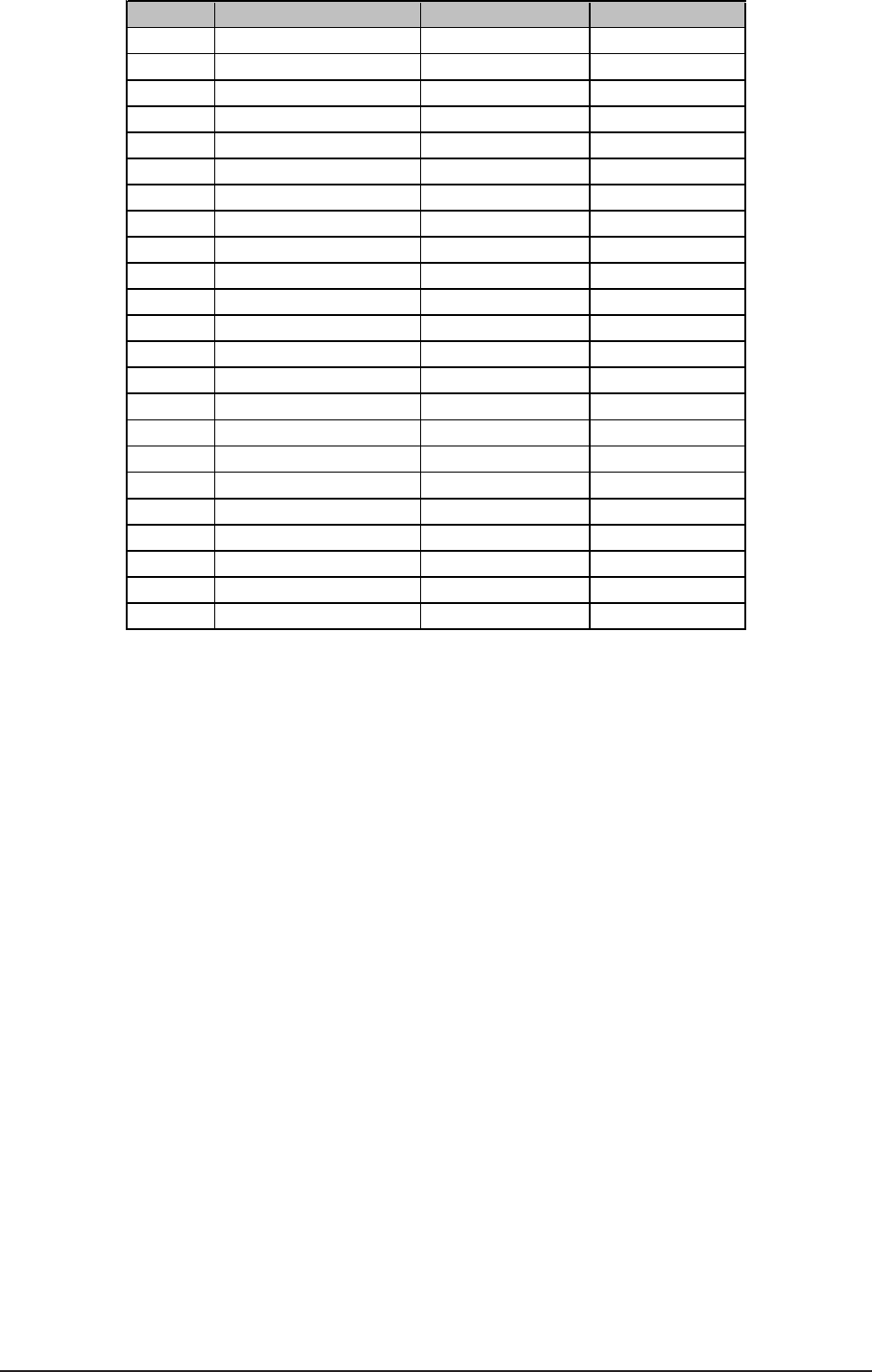
43
Channels Source Route Destination
1 Kick Direct out Track 2
2 Snare Direct out Track 3
3 Hi Hat Direct out Track 4
4 Tom 1 Subgroups 5 and 6 Tracks 5 and 6
5 Tom 2 Subgroups 5 and 6 Tracks 5 and 6
6 Tom 3 Subgroups 5 and 6 Tracks 5 and 6
7 Tom 4 Subgroups 5 and 6 Tracks 5 and 6
8 Cymbals (overheads) L Direct out Track 7
9 Cymbals (overheads) R Direct out Track 8
10 Bass microphone Subgroup 3 Track 1
11 Bass DI Subgroup 3 Track 1
12 Escaping prisoners Subgroup 4 Who knows?
13 Trumpet Subgroups 1 and 2 Tracks 9 and 10
14 Trombone Subgroups 1 and 2 Tracks 9 and 10
15 Sax Subgroups 1 and 2 Tracks 9 and 10
16 BVs 1 Subgroups 7 and 8 Tracks 11 and 1
2
17 BVs 2 Subgroups 7 and 8 Tracks 11 and 1
2
18 BVs 3 Subgroups 7 and 8 Tracks 11 and 1
2
19 Conga L Direct out Track 13
20 Conga R Direct out Track 14
21 Guitar 1 microphone Direct out Track 15
22 Guitar 2 microphone Direct out Track 16
23 Lead vocal Direct out Track 17
Tab. 16.1: Channel assignment
Tape Monitoring will be via MIX-B in tape return mode. Once tracks are layed, they will be flipped onto the
A-channels (1 to 17), and overdubbing can commence via tracks 18 to 24. Also bouncing, reducing several
tracks onto one or a stereo pair, requires access to the full routing matrix. This is available to the A-channels,
but not the B-channels.


















